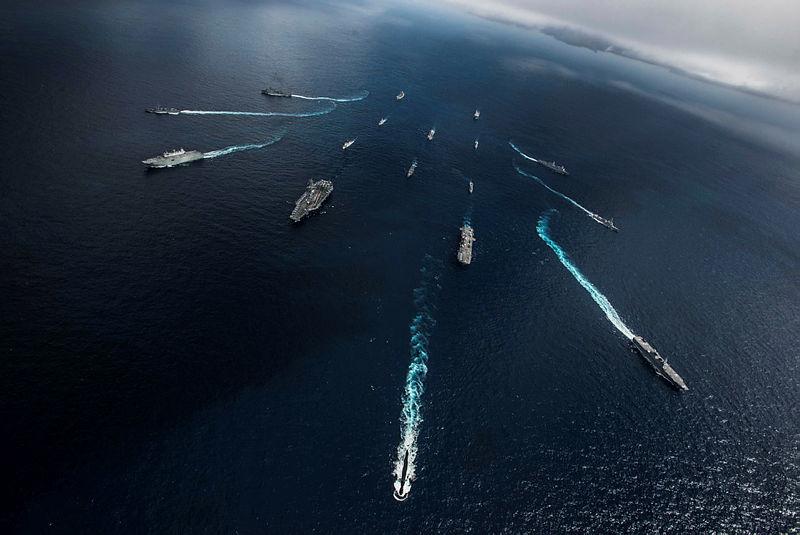
All alliances are political compacts. The health of these agreements relies on each party being clear about its responsibilities and committed to the terms.
The political compact of the ANZUS treaty is simple: Australia provides financial alignment, public political support and private intelligence-sharing. In return, the US shares intelligence and technology and provides an implicit assurance of protection of the Australian continent.
This compact, which emerged by the late 1950s, is what I’ll call the ‘Robert Menzies model’ of the alliance. Though it operates in an ad hoc, weakly institutionalised form, it has served both sides well for nearly seven decades.
After spending a few months in Washington as the Fulbright Professional Scholar in Australian–US Alliance Studies, I’ve come to think the Menzies model doesn’t work well enough for either side anymore. This is not to say the alliance is at risk; rather, it is a recognition that as both of our countries and their environments are changing, so too must the commitments we make to each other.
This post, the first in a series of three, argues that there are diverging strategic interests between Australia and the United States. In this post I outline what they are, and in following posts I’ll look at different ways we could revise the political compact underlying ANZUS.
What is the value of this approach? First, for all the celebrations of mateship, and the beehive of activity that marks the alliance today, it’s important that we keep a clear eye on the purpose of the relationship. What are we cooperating for? How do our goals overlap or differ? The risk is that in our bid to maintain intimacy we are accepting a deliberate vagueness about our interests. Closeness will matter little if, in a crisis, it becomes clear one party has no interest in meeting the unspoken assumptions of the other.
Second, while officials will implement policies that may sit across one or more of the potential models for the alliance, they can’t pursue them all simultaneously. Some of these models will require major efforts at public persuasion and new spending that needs to begin soon. Other ambitions will be contradictory, and trade-offs will need to be made.
In 2015, Michael J. Green and colleagues argued there were emerging ‘expectation gaps’ in ANZUS. Since then, I think these gaps have grown large enough to be identified as four diverging strategic interests between the US and Australia. These are, to be clear, the fault of neither President Donald Trump’s bullying, nor the malign influence of the Chinese Communist Party. Many are longstanding issues of Australian strategic outlook; we just haven’t needed to talk about them because things were easy in Asia. Now things are hard, and we do need to talk about them.
American primacy in Asia
Primacy in this context is not a synonym for empire, but means seeking a preponderance of military power and political leadership. Though there are some dissenters, a large bipartisan contingent in Washington maintains that primacy is not only good for America, it is necessary to avoid the world turning to chaos and war. To the degree that there’s a call to pull back from the Middle East, it is generally framed in terms of better sustaining primacy in Asia.
Australia has benefited immensely from American primacy. We very much like it. But it is not a vital strategic interest for us (that is, it’s not something we would fight to preserve). Nor is this a recent judgement. Since the early 1970s, Australia has welcomed the rise of China, helped it grow economically, and argued that Beijing should receive a level of political and institutional recognition commensurate with its size. Australians believe that great powers deserve some elbow room.
Institutional status quo
At a recent party I attended in Washington, former prime minister Tony Abbott described Australia as the ‘little brother’ to the ‘big brother’ US. Yet, his government ignored pressure from the Obama administration and signed up to China’s Asian Infrastructure Investment Bank. Australia has refused to send our navy out to conduct new freedom-of-navigation operations in support of the UN Convention on the Law of the Sea. Abbott’s government, like others before and since, worried that projects such as the AIIB and the Belt and Road Initiative are part of China’s grand plan for influence. And yet ultimately they have largely accepted the face-value contributions of those schemes and the legitimacy of institutional change.
Taiwan
Australia wishes Taiwan could ever remain an independent democracy. But it is hard to see Australia doing much to help defend it. The context will of course matter. An unprovoked case of CCP aggression would make it easier, a Taiwanese-initiated break much harder. But Australia’s military is not a very useful vehicle for helping protect or retake the island, and the consequences would be high. Two senior ministers in 2004 and 2014, both conservatives, have publicly said Australia would not automatically go to Taiwan’s aid.
Australian troops beyond Asia
While the Australian government has continued to keep residual forces in the Middle East, this seems mainly an effort to avoid drawing political fire from either the Trump administration or zealots in the press at home. We wish the region well, especially states such as Israel, but as the 2016 defence white paper made clear, our military spending and attention are pulling closer to home.
No doubt readers will quibble with parts of this list. But if you accept that both the US and Australia are changing, and that our present alliance compact may involve expectations one or both sides do not want to meet, then we need to find a way to put the alliance on a firmer foundation. In the next two posts I’ll offer three different ways we could do that.